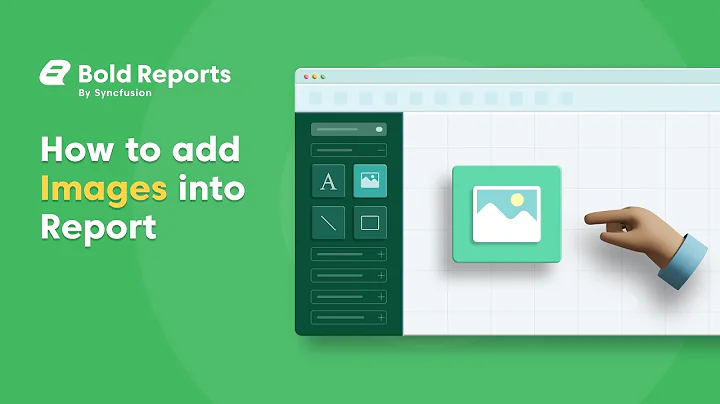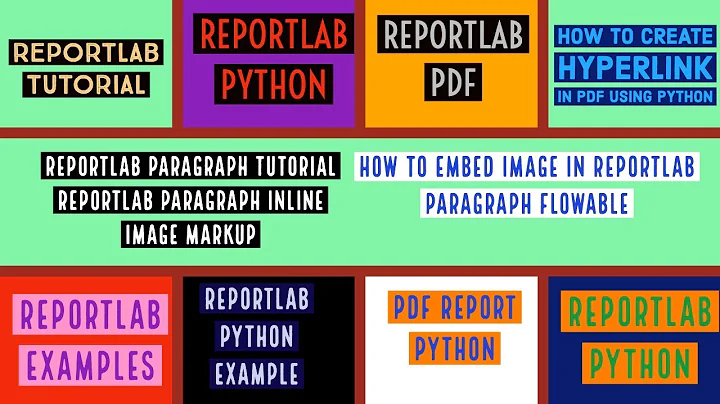Insert image into Reportlab either from PIL image or StringIO
Solution 1
The repetitive declaration "Formats supported by PIL/Java 1.4 (the Python/Java Imaging Library) are supported" simply means that data formats supported by PIL are supported by reportlab (since it uses PIL to read them).
Now, from peeking in reportlab.platypus.flowables.Image code it is possible to see that it accepts either a filename or a file object as input. The former is not what you want, so let us focus on the later. You said StringIO didn't seem to work, but it does if you take some care. You probably did something wrong with it, here are two correct ways to use StringIO:
import sys
import PIL
from cStringIO import StringIO
from reportlab.platypus.flowables import Image
# Method 1
data = open(sys.argv[1]).read()
img1 = StringIO(data)
# Method 2
img2 = StringIO()
PIL.Image.open(sys.argv[2]).save(img2, 'PNG')
img2.seek(0)
# Method 3 (fails)
img3 = StringIO(PIL.Image.open(sys.argv[2]).tostring())
story = [Image(img1), Image(img2)]
#Image(img3)
The method 3 fails because img3 now holds the raw data of the image, so it has no idea about the actual format of this data. There is no reason to attempt to use this method for such task.
If you have raw data and you know the image mode of your data ('L', 'RGB', etc) and also its width, height, then you can use a fourth (correct) method based on PIL.Image.fromstring(...).save(mystrio, 'someformat').
Solution 2
I had no luck with the proposed methods.
Checking the code in pdfdoc.py shows, that the AttributError results from treating the StringIO as a filename:
if source is None:
pass # use the canned one.
elif hasattr(source,'jpeg_fh'):
self.loadImageFromSRC(source) #it is already a PIL Image
else:
# it is a filename
Further checking the source, shows that jpeg_fh is an attribute of class ImageReader in reportlab.lib.utils. ImageReader accepts both StringIO and PIL images.
So wrapping the StringIO in an ImageReader solved the problem for me:
import PIL
from reportlab.lib.utils import ImageReader
io_img = StringIO(data)
pil_img = PIL.Image.open(StringIO(data))
reportlab_io_img = ImageReader(io_img)
reportlab_pil_img = ImageReader(pil_img)
canvas.drawImage(reportlab_io_img, ...)
canvas.drawImage(reportlab_pil_img, ...)
Related videos on Youtube
Mark
Web developer working at an international entertainment company. Experienced in javascript, jQuery, CSS, HTML and Python. I use mainly the Pylons Web Framework for web development. I remember having a really hard time starting web development. So many components to web development, AJAX, Javascript, CSS, server-side technologies. Now that I have become more comfortable, I want to give back to the community by answering questions posted by those in need. I know how you feel and I hope my inputs find you well.
Updated on October 24, 2022Comments
-
Mark over 1 year
I'm trying to insert a barcode image into Reportlab. I know there are a lot of questions asked on this, but all of them assume that you already have the image file in the directory or on the filesystem.
Due to the fact that Reportlab has issues with EAN13 barcodes, I decided to use another package called pyBarcode to generate the image for me.
Initially I saved the image in a StringIO instance and passed it directly to
reportlab.platypus.flowables.Imagebut that didn't seem to work. Then I read the documentation:Formats supported by PIL/Java 1.4 (the Python/Java Imaging Library) are supported.
Does this mean that if I pass a PIL image, this should work? I got an exception when I tried the following:
>>> import PIL >>> from reportlab.platypus.flowables import Image >>> fp = StringIO(the_barcode.getvalue()) >>> barcode_image = PIL.Image.open(fp) >>> doc = SimpleDocTemplate('barcode.pdf') >>> story = [Image(barcode_image)] >>> Traceback (most recent call last): File "create.py", line 57, in <module> main() File "create.py", line 24, in main save_pdf(fp, STYLE, ART, COLOR, SIZE) File "create.py", line 28, in save_pdf fp = StringIO(fp.getvalue()) File "/home/mark/.virtualenvs/barcode/local/lib/python2.7/site-packages/reportlab-2.6-py2.7-linux-i686.egg/reportlab/platypus/flowables.py", line 402, in __init__ if not fp and os.path.splitext(filename)[1] in ['.jpg', '.JPG', '.jpeg', '.JPEG']: File "/home/mark/.virtualenvs/barcode/lib/python2.7/posixpath.py", line 95, in splitext return genericpath._splitext(p, sep, altsep, extsep) File "/home/mark/.virtualenvs/barcode/lib/python2.7/genericpath.py", line 91, in _splitext sepIndex = p.rfind(sep) File "/home/mark/.virtualenvs/barcode/local/lib/python2.7/site-packages/PIL/Image.py", line 512, in __getattr__ raise AttributeError(name) AttributeError: rfindSomehow PIL Image doesn't seem to work either. What should I pass as the first argument to Reportlab's Image function if I don't have the filename of the image (because my images are created in memory)?
-
Rui Martins about 6 yearsIn Python 3, use 'from io import BytesIO' instead of 'from cStringIO import StringIO'. And 'img2 = BytesIO()' instead of 'img2 = StringIO()'
-
 Bob Stein about 6 years
Bob Stein about 6 yearsImage()can also takeresponse.raw, the "File-like object representation of response" fromrequests.get(). Reportlab User Guide now admits that the Image() filename parameter can be a "file like object". So, phew, it's not an undocumented feature. -
 Bob Stein about 6 years
Bob Stein about 6 yearsImage(requests.get("http://example.com/foo.png", stream=True).raw, w, h)for example.









